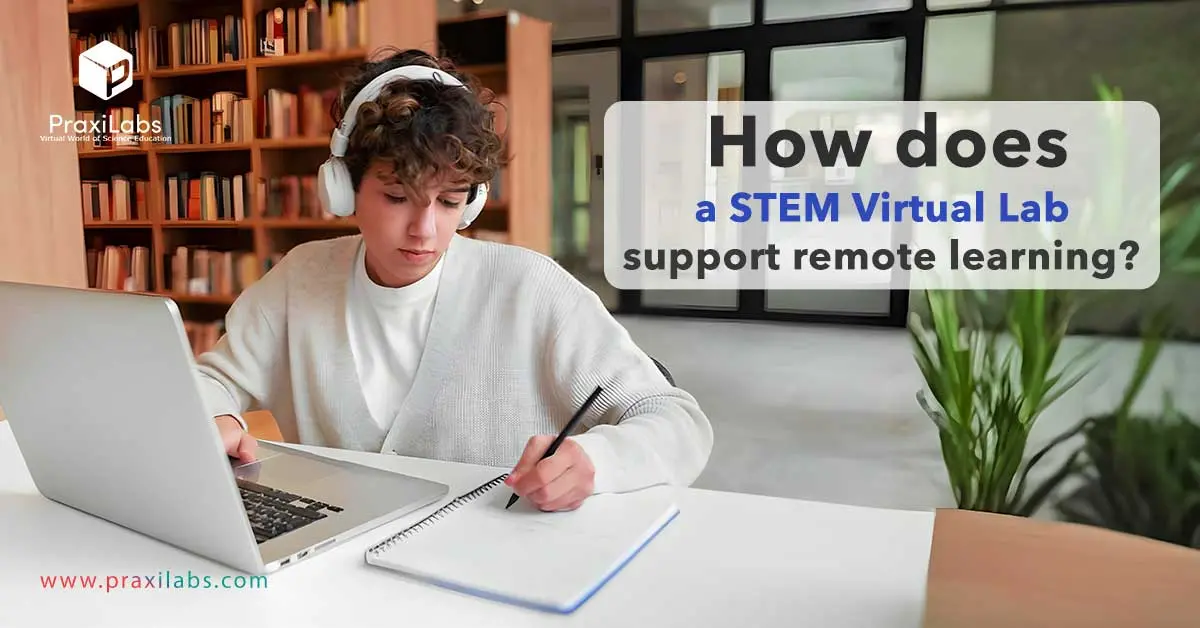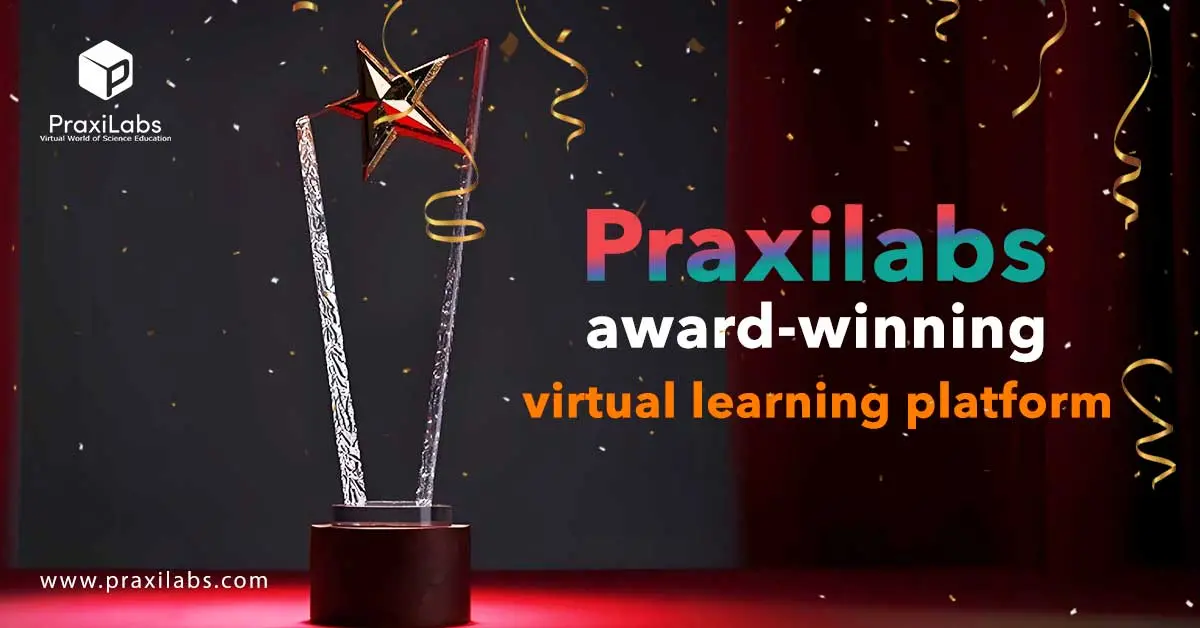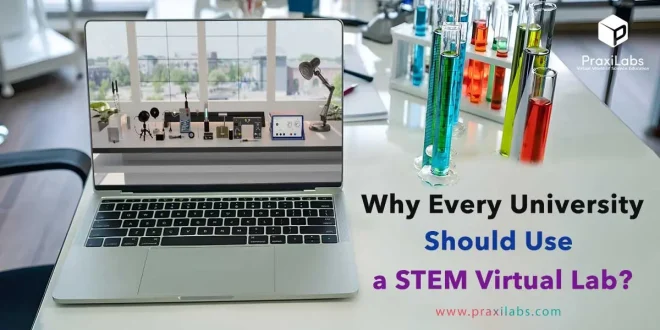Last Updated on August 24, 2025 by Muhamed Elmesery
STEM education is no longer confined to physical classrooms and costly laboratories. With virtual labs, universities can give students safe, affordable, and unlimited access to real-world experiments—anytime, anywhere.
Beyond cutting costs, STEM virtual labs boost engagement, improve exam readiness, and prepare students with the practical skills they’ll need in their careers. For universities aiming to stay ahead, adopting STEM simulation isn’t optional anymore—it’s essential.
In this blog post we will know more about stem virtual lab, objectives, benefits, how does a STEM virtual lab support remote learning, how do virtual labs allow students to explore science concepts, and more!
Table of Contents
What is STEM virtual lab?
A STEM virtual lab is an online virtual lab simulation that mimics the real-world science laboratory environment, allowing students to perform experiments and explore scientific concepts using their computers. STEM laboratory offers a safe and interactive method for students to learn STEM (Science, Technology, Engineering, and Mathematics) subjects while enhancing their critical thinking skills.
What are STEM virtual lab objectives?
The main objective of STEM virtual lab is to enhance the quality of learning in science, technology, engineering, and mathematics through interactive, immersive, and simulated lab experiences.
Other important STEM virtual lab objectives include:
- Preparing students before dealing with the real lab as they conduct the experiments virtually first.
- Enhancing students’ visual impact and observational skills.
- Understanding the mechanisms, protocols, and principles of different experiments.
- Facilitating personalized learning.
- Fostering creativity, critical thinking, and problem-solving.
Benefits of using virtual labs in STEM
Several studies have demonstrated the effectiveness of virtual laboratories in STEM education and research:
Recently, researchers conducted a quasi-experimental study to assess the impact of virtual labs in a biology course. The results of their research showed that a biology-based virtual laboratory intervention improved students’ attitudes and made learning complex biological topics easier.
In a first-of-its-kind study, microbiome researchers created a traditional microbiome lab to teach undergraduates how to explore microbial diversity in human saliva samples using molecular and computational procedures.
Since standard microbiome research projects involve complex hands-on protocols, researchers utilized molecular-biology-based and bioinformatics-based virtual labs before wet lab engagement to determine if virtual labs could provide undergraduates with sufficient background knowledge and skills to perform complicated microbiome research procedures successfully.
Data demonstrated that pre-virtual lab exploration enhanced students’ ability to complete their microbiome course projects.
How does a STEM virtual lab support remote learning?
STEM virtual labs are now one of the most effective educational solutions used in higher education and schools to enhance remote learning outcomes and student engagement.
The interactive 3D virtual lab solutions provide students with access to realistic stem learning labs anytime and anywhere as many times as needed. Students can do their experiments without any risks at their own pace.
Also, these simulations enrich students’ understanding with a variety of informational and educational content to enhance their understanding and learning, with the aim of providing equal opportunity for an enhanced STEM education for students everywhere.
A lot of remote online universities, colleges, and educational institutions have already adopted virtual labs as they recognize the vital role of virtual environments in increasing remote learning and student engagement.

How do virtual labs allow students to explore science concepts?
The immersive and interactive 3D virtual STEM labs and simulations go a long way in providing students with the tools that allow for more focus, attention, and engagement. Students remain interested and engaged while staying alert and absorbing the information more easily. The 3D science experiments simulations enhance students’ understanding and knowledge with a virtual hands-on experience of what they’ve learned.
STEM virtual labs and simulations allow students to perform their experiments and explore scientific concepts in a virtual environment. This shift is very important as it overcomes the limitations of physical lab spaces, such as: safety hazards, high costs, ethical challenges, and high student dropout rates, making hands-on learning more scalable and widely available.
Stem virtual lab and exams preparation support
Stem virtual labs can significantly aid in STEM education and exam preparation by providing accessible, flexible, interactive, and personalized learning experiences.
STEM virtual labs can be integrated with exam prep tools to strengthen learning outcomes:
1. Practice Before the Test
Students can run unlimited experiments to reinforce theory with practice.
Complex topics (e.g., DNA replication, chemical reactions, circuit analysis) become easier to visualize.
2. Assessment & Quizzes
Built-in auto-graded quizzes after each experiment.
Immediate feedback highlights mistakes and corrects them on the spot.
3. Exam Simulations
Virtual labs can mimic real exam scenarios (timed labs, practical questions).
Reduces test anxiety by making students familiar with the exam setup.
4. Analytics for Teachers
Teachers track performance, identify weak areas, and personalize revision sessions.
Data-driven insights ensure students are exam-ready.
Pick the Best Virtual Plan or You

Praxilabs: award-winning virtual learning platform
PraxiLabs has officially been awarded the STEM.org – Educational Research & Credentialing Est. 2001 Accredited™ Educational Experience Trustmark, and this accreditation validates our commitment to delivering high-quality STEM educational experiences.
PraxiLabs aims to make scientific virtual labs accessible, usable, and affordable for educational institutions and schools. PraxiLabs not only provides an immersive 3D virtual lab experience, but it also adds enriched content that provides students with more understanding and knowledge.
Even more information and useful data will be provided to help students understand the experiments better. Clear guides are provided on the tools, materials, and devices to use for different experiments- explaining not just how to use them, but why they’re important.
- +1,000 Educational Institutions.
- +200 science experiment simulations in over 20 branches of science.
- Over 1 Million Students worldwide are benefiting from our simulations.
- +10 global partners.
- Over 6,000 attendees at our webinars.
- More than 10 internationally recognized awards.
- LMS integration within 24 hours, analytics dashboard, and 24/7 tech support.
- Try PraxiLabs and experience a Virtual World of Science Education.
Frequently Asked Questions
Is there any effective virtual lab for scientific research?
Yes, virtual labs can be an effective tool for scientific research, especially if physical resources are limited or experiments are dangerous or costly.
What are the benefits of implementing virtual labs?
Implementing virtual labs has several benefits such as:
- Immersive Interaction and 3D Virtual Experiments.
- Cost-Effectiveness.
- Enhanced Safety.
- Time Efficiency.
- Available Anytime, Anywhere and for Many Times.
 PraxiLabs A virtual world of science
PraxiLabs A virtual world of science






